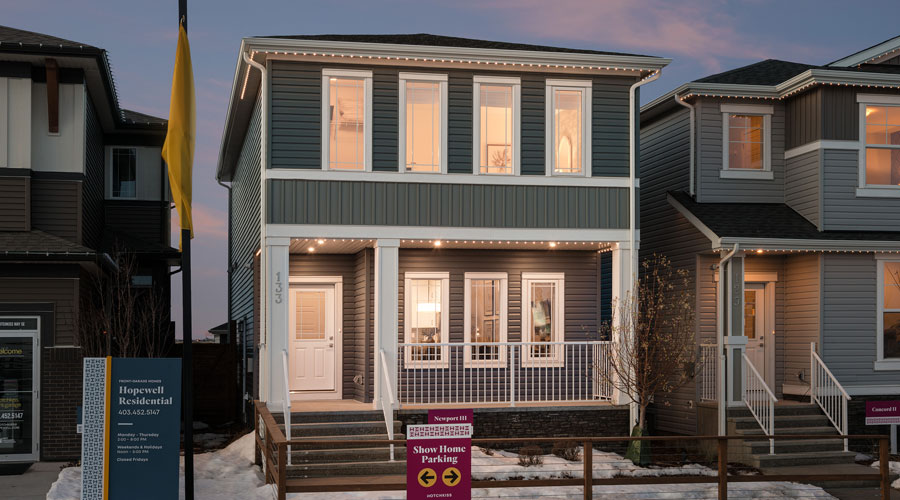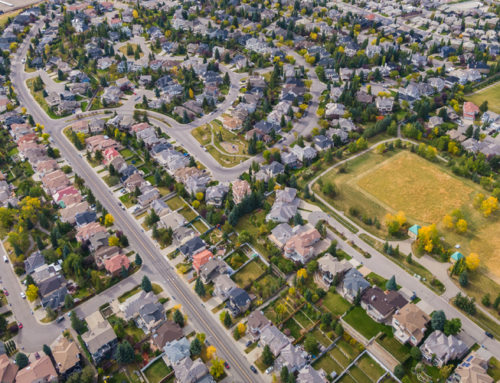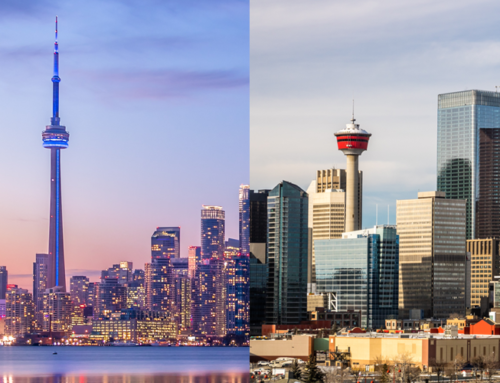
Owning a home might be a little closer than you think! The Government of Canada knows it isn’t easy affording a home these days, which is why they added a new way to help home buyers save for their first home.
In the 2022 federal budget, the government tackled the ever-growing issue of home affordability. Along with increasing new construction in the country and doubling the credit for first-time home buyers, they also introduced the Tax-Free First Home Savings Account (FHSA). An FHSA is a new registered plan to help Canadians save towards their first home by allowing them to contribute up to $40,000 over the lifetime of the plan.
This means that your homebuying dreams may become a reality sooner than you think.
What is the Tax-Free First Home Savings Account (FHSA)?
A First Home Savings Account is a great way to amplify your savings and achieve your home buying goals because you won’t pay any taxes on these savings when it comes to home buying.
Starting April 2023, prospective first-time homebuyers in Canada will have the opportunity to save up to $40,000 on a tax-free basis towards buying a first home through the new Tax-Free FHSA.
If you qualify, you will have the opportunity to contribute up to $8,000 each year to the account. But you must use these funds within 15 years of first opening an FHSA or before the age of 71 (whichever comes first), otherwise, the account will be closed.
How does an FHSA work?
This new registered account combines the best parts of both a Registered Retirement Savings Plan (RRSP) and a Tax-Free Savings Account (TFSA).
You can take advantage of the tax-deduction benefits of an RRSP since contributions to an FHSA are tax deductible. Just like a TFSA, withdrawals (including any investment income or growth) to purchase a first home will not be taxed, which allows your investments to grow without a tax bill.
This means that the money you put into an FHSA in addition to what you earn, can all go towards a down payment for your first home.
Be aware that there are a few conditions when you make a withdrawal to avoid any potential tax penalties.
- You’ll need a written agreement to buy or build a qualifying home in Canada before October 1 of the year following the year of withdrawal, and
- You must live in the house, and it must be your primary home within one year of buying or building it.
Who’s eligible for the Tax-Free First Home Savings Account?
Before you can open an account, you need to meet the following criteria:
- Be at least 18 years of age
- You are a resident of Canada at the time of the withdrawal
- You are a first-time homebuyer meaning you haven’t owned a home at any time in the year the account is opened or during the previous four calendar years.
If you’ve met the eligibility requirements listed above, you’ll likely qualify.
Who doesn’t qualify for the Tax-Free First Home Savings Account?
This account is not for homebuyers who have previously owned a home or those looking to buy a second home.
But you may still be considered a first-time homebuyer if you haven’t owned a home within the last four calendar years. An example would be if you sold a home in 2018 and have been renting or living with your parents or a non-spouse ever since, then for the purpose of this plan, you may be considered a first-time homebuyer again.
How much can you contribute?
You can contribute up to $40,000 over your lifetime and up to $8,000 in any one year. This includes 2023 even though the rules will not become effective until April 1, 2023.
The annual contribution limit is only applicable to contributions made within a given calendar year. Unlike RRSPs, contributions made within the first 60 days of a given calendar year cannot be credited to the previous tax year. Although you can carry forward $8,000 of your unused annual contribution amount for use in another year. As long as you do not exceed the lifetime contribution limit, you can hold and contribute to multiple FHSA.
Any overcontributions to an FHSA are taxed at the rate of 1% of the highest amount over the limit that occurred in that month. The tax applies for each month (or part-month) that the account is over the limit.
What if you don’t purchase a home?
Any savings not used to purchase a qualifying home could be transferred into an RRSP or RRIF (Registered Retirement Income Fund) on a tax-free basis, subject to applicable rules. The funds deposited into an RRSP or RRIF would be taxed only at the time it is withdrawn.
If FHSA funds are not transferred but rather withdrawn immediately, they would be subject to tax now.
How is the First Home Savings Account different from the Home Buyers Plan?
The Home Buyers’ Plan allows Canadians to withdraw up to $35,000 from their RRSP provided they meet the eligibility criteria. They must pay back the amount in 15 years.
In comparison, an FHSA does not require repayment of funds.
Available home savings and tax credits
If you are planning to buy a home in the next few years and don’t have enough time to earn the maximum amount of $40,000, you can still use your savings from the tax-free FHSA in combination with the other new tax proposals.
The federal government increased the amount used to calculate the First-Time Home Buyers’ Tax Credit to $10,000, providing up to a $1,500 tax rebate to first-time home buyers. Additionally, the First-Time Homebuyer Incentive, which offers new homeowners a chance to lower their monthly payments, has been extended until March 31, 2025, as well.





